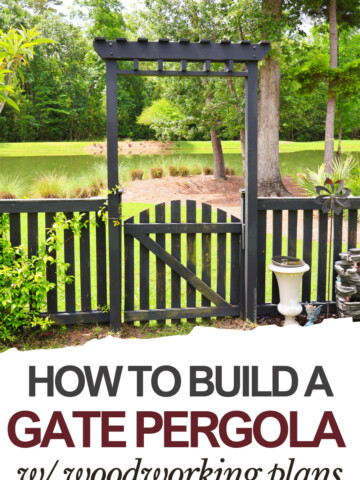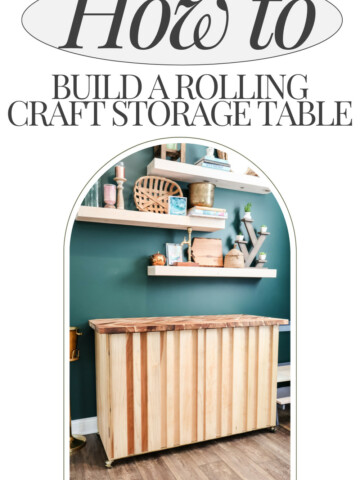Trying to decide if you should use wood filler vs spackle? Let's talk about what each is and when to use them!
Do you need to patch a hole? If you head to the hole-patching section at your hardware store, you will probably see wood filler and spackle. They look pretty similar - so which do you pick?
You need to understand what wood filler and spackle are each made of to best understand which product is right for your patch job!
See our full comparison of spackle vs wood filler vs caulk here!
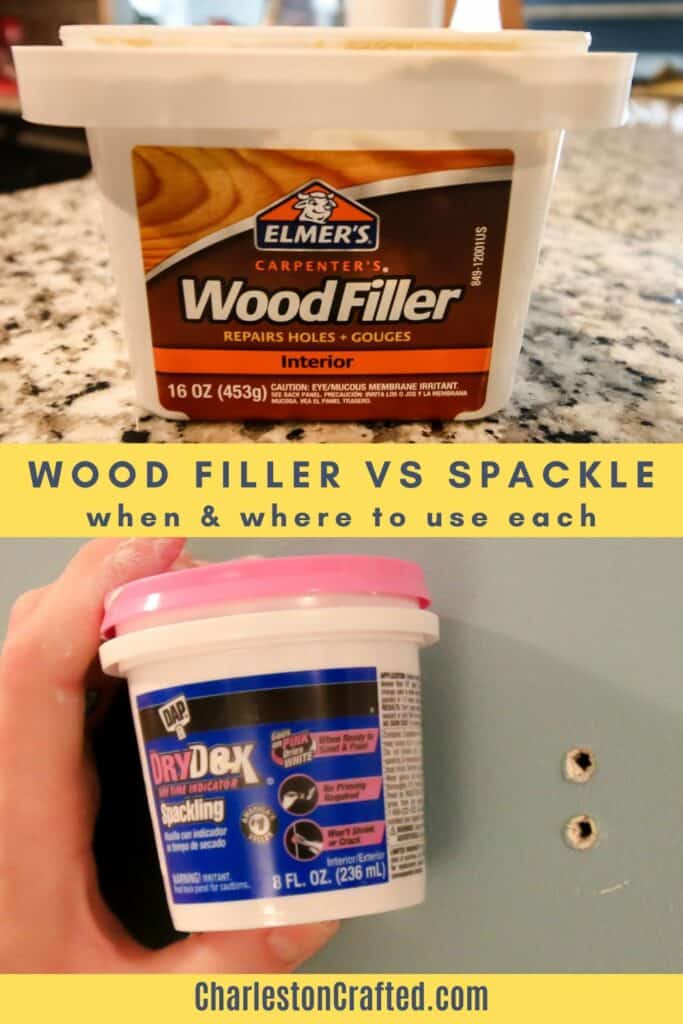
Understanding Wood Filler
Wood filler is a patching product that was designed specifically for wood surfaces. It is made from saw dust/tiny wood particles mixed with a binding agent: epoxy, latex, or cellulose.
Use wood filler to patch flat cracks or gaps in molding. The wood filler does a better job of smoothing flush because it is made to fill in flat gaps and joints on wood.
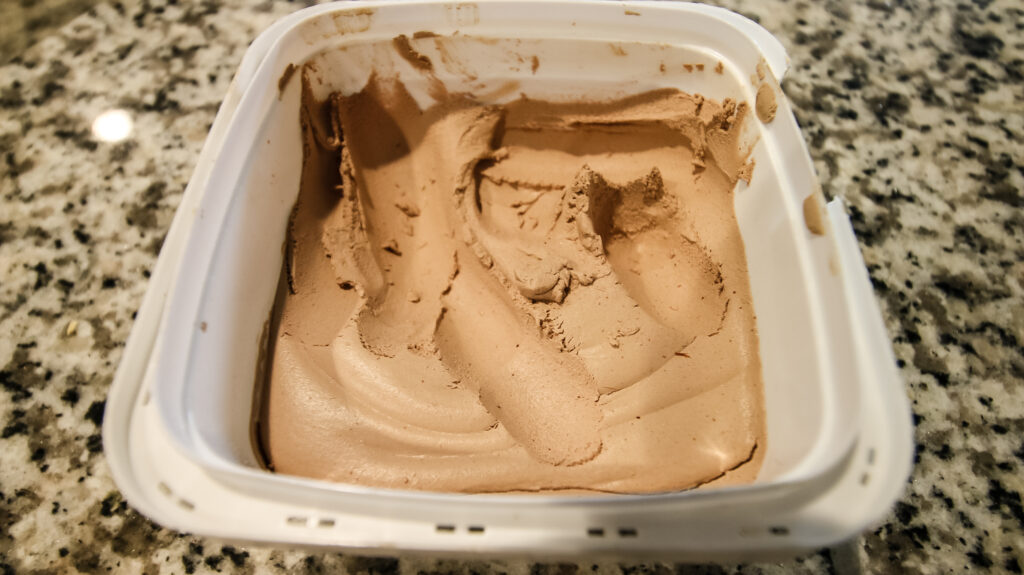
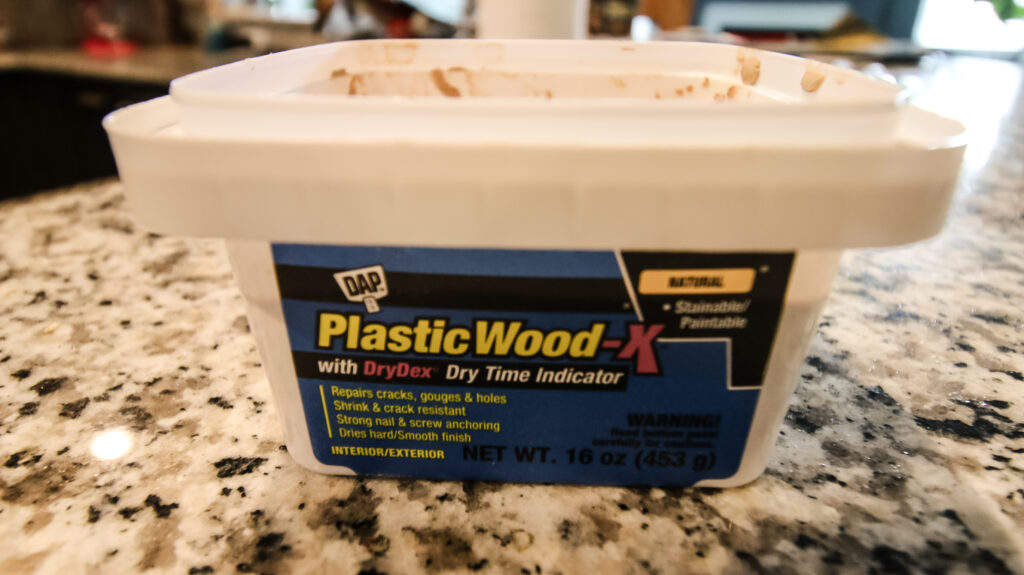
You can see our test + comparison of 4 popular wood filler brands here!
Benefits of Wood Filler
- Ideal for repairing cracks, dents, and gouges in wooden furniture, trim, and flooring.
- Provides a strong bond with wood and is less likely to shrink or crack over time.
- Can be sanded, stained, and painted to blend seamlessly with the surrounding wood.
Best uses of Wood Filler
- Filling deep holes and gaps in wooden surfaces.
- Restoring rotten or damaged wood.
- Preparing wooden surfaces for refinishing.
Types of Wood filler
- Water-Based Wood Fillers: easy to use, environmentally friendly, easy clean up, quick drying, low odor and low VOC
- Solvent-Based Wood Fillers: made with acetone or mineral spirits and very durable, longer dry time, can use outdoors.
- Wood Epoxy Fillers: two part system that has to be mixed. Very stinky. Long cure time. Very strong and weather proof once dry.
Wood filler drying + cure time
- Dry time varies by brand + specific product - always consult your can or bottle for proper dry time.
- In general, water based wood fillers dry quickly, solvent and epoxy based wood fillers dry slower.
- Temperature and humidity levels can effect dry time.
- Cure time is how long it takes wood filler to reach it's maximum hardness. Even if it is dry to the touch, it might not be fully cured.
- Water based fillers cure in a few hours, while others can take much longer. Check the back of the can and be sure your project is cured before handling it!
Understanding Spackle
Spackle is aa patching product designed to repair minor surface imperfections on drywall, plaster, and other non-wood surfaces. It is made of gypsum or calcium carbonate and water.
Spackle is used to fill holes in drywall made from screws or nails. Spackle forms to the best consistency and sands down best to match drywall and fill nail holes evenly.
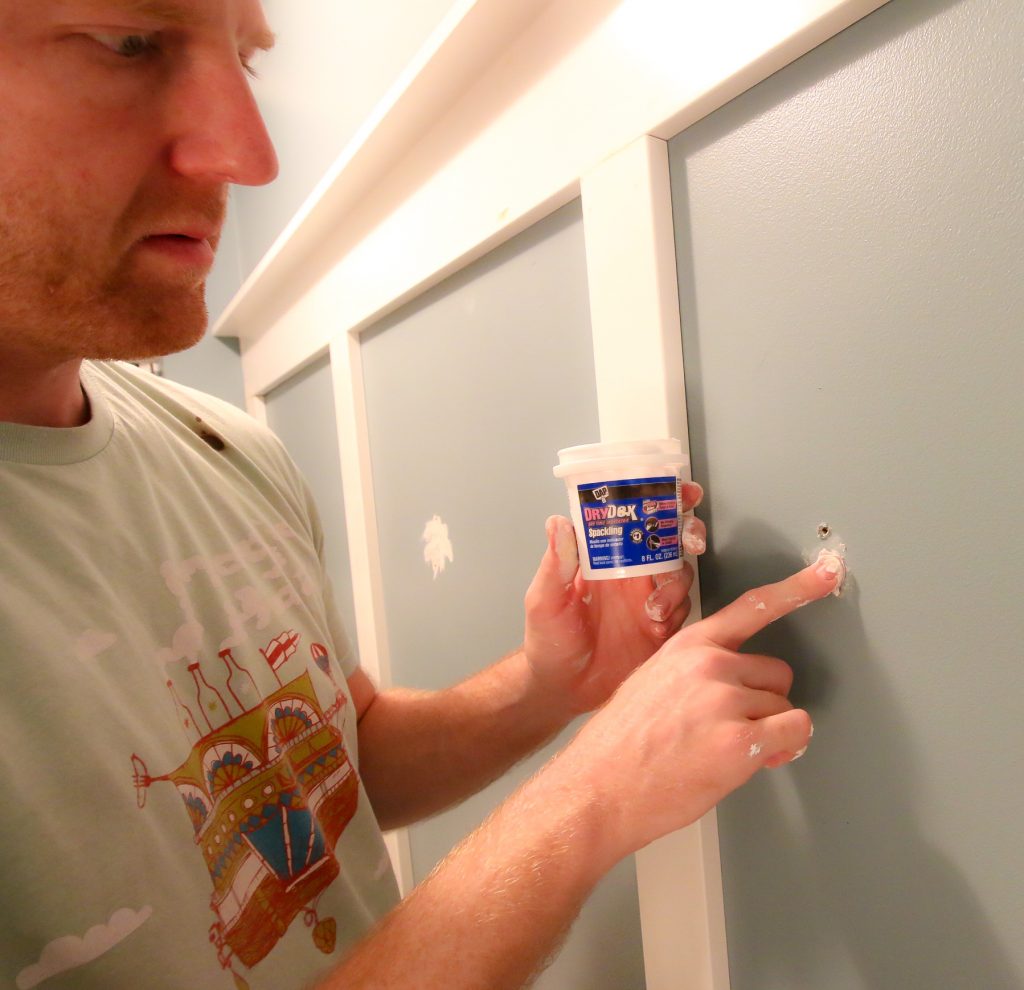
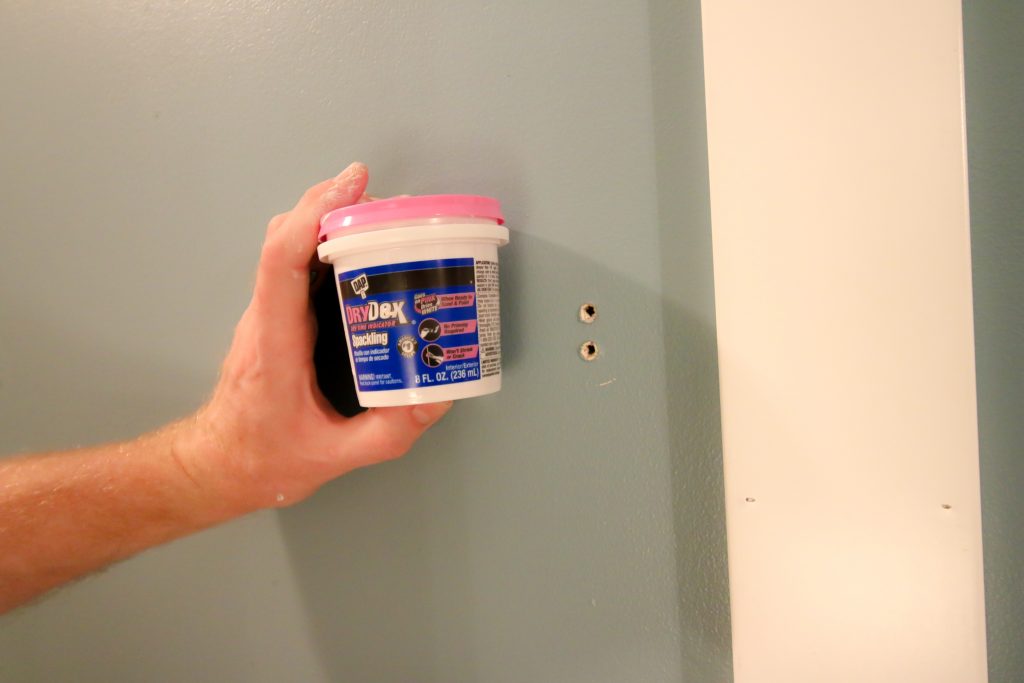
Benefits of Spackle
- Quick-drying and easy to apply, making it suitable for small, shallow repairs.
- Lightweight spackle specifically is super user-friendly and easy to carry and work with.
- Works well on painted or non-wood surfaces.
- Requires minimal sanding and is generally smooth after application.
Best uses of spackle
- Patching small nail holes or minor dents in walls.
- Repairing chips or blemishes in drywall and plaster.
- Smoothing seams and joints in non-wood materials.
Types of Spackle
- Lightweight spackle - super light in weight, easy to work with, great for small projects and beginners. Quick drying, minimal shrinking.
- Ready-mixed spackle - This is traditional spackle sold in jars or tubes and is ready to go. It's easy to store and use.
- Quick drying spackle - this is designed to dry super quickly. That can be great, but it can also mean it dries before you are done working it. I suggest working in thin layers to get best results!
Spackle dry + cure time
- Spackle dry time varies by brand and product, consult the label for best guidance.
- Obviously, quick drying spackle will dry the fastest.
- Remember that fast dry time isn't always great. Since you apply it so thin, it can dry as you are working with it, before you have a chance to get it as smooth as you'd like.
What are the differences between wood filler and spackle?
Wood filler is designed to use on wood while spackle is designed to use on drywall. This is how they are made - from wood or drywall material, respectively, to seamlessly blend in and repair holes and small cracks.
Shrinkage
Wood filler tends to shrink as it dries while spackling does not. For this reason, you usually overfill holes in wood with wood filler, and you usually try to get spackle smooth on small holes before it dries (and watch out - it is quick setting!)
Sanding
In general, spackle is easier to sand than wood filler. There's a reason why those small patch-a-wall-hole kits come with a tiny little swatch of sandpaper - that's really all you need.
On the other hand, wood filler usually needs an orbital sander to sand smooth. A lot of wood filler has epoxy in it, which makes it much harder to the touch and to sand.
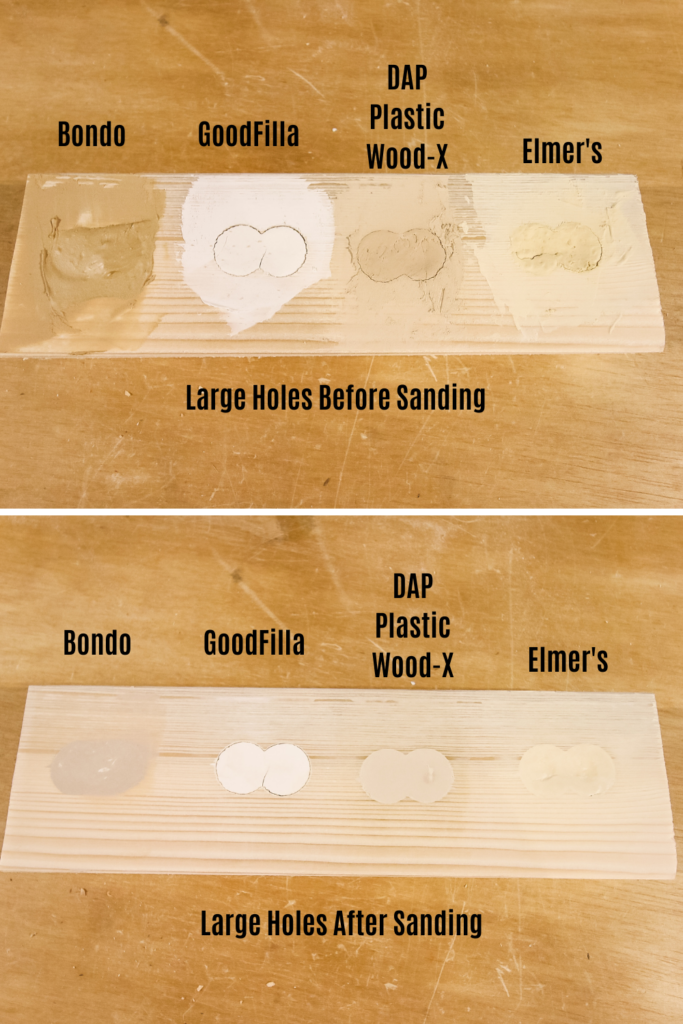
Choosing the Right Product for Your Project
The right product for your patch job depends highly on the surface that you are patching.
Wood Surfaces
For deep repairs or damaged wood, wood filler is the better choice due to its durability and ability to blend seamlessly with the wood's appearance.
For small surface blemishes or nail holes on painted wooden surfaces, spackle can be a quick and convenient solution.
But, spackle is not going to stain like stainable wood filler and it won't be as hard of a finish.
Wood filler is always the best choice for filling holes in wood!
Can you use spackle on wood projects?
You can use spackle to fill very small holes in wood. However, it will not be as durable or stainable as wood filler. Wood filler is always best for wood projects!
Should you use wood filler or spackle on trim?
Trim is made of wood and because you want a very hard durable finish, I always recommend using wood filler on trim.
Remember that wood filler is made from sawdust so it is going to blend best with the wood of the trim.
Of course, this means that you will need to overfill to account for shrinkage and sand it smooth which can be a lot of work compared to spackle, which you can really apply pretty flush and barely have to sand.
But wood filler will give you the best result in the end.
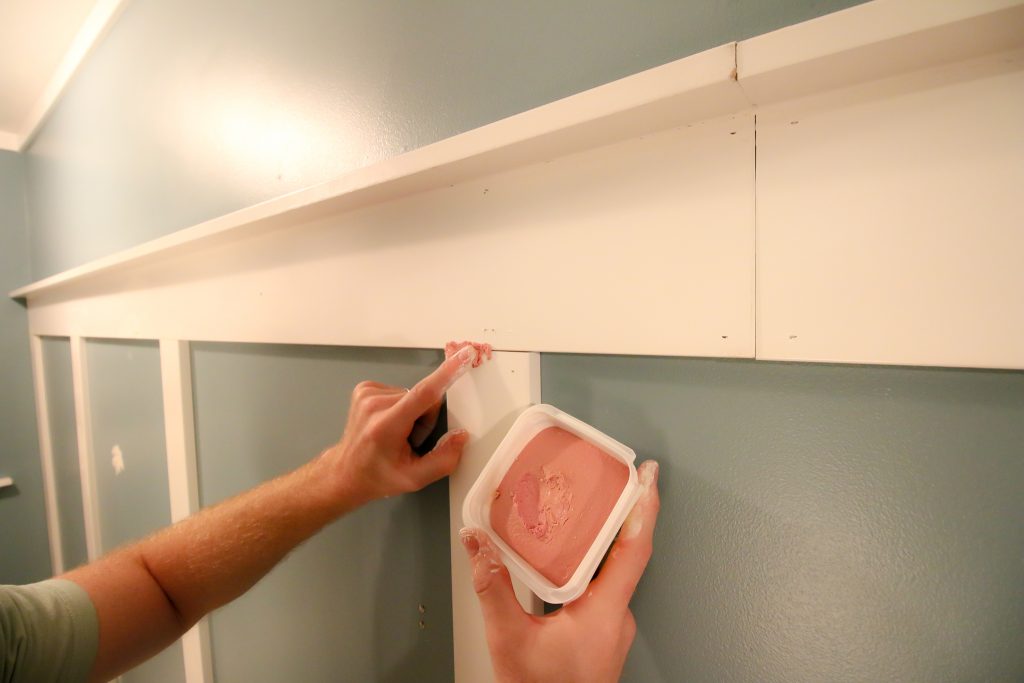
Non-Wood Surfaces
Spackle is the best choice for most minor repairs on drywall, plaster, and similar surfaces. It is made to blend seamlessly with drywall, sand easily, and perfectly patch holes.
Can you use wood filler on drywall?
Avoid using wood filler on non-wood materials such as drywall, as it may not adhere properly and could result in a lumpy finish.
Remember, wood filler can be hard to sand, which leads to it being very difficult to get smooth on the wall.
Comparing drying time of wood filler vs spackle
Drying time really varies more by specific product and brand. However, in general, spackle dries quicker than wood filler. If you have a time-sensitive repair, spackle might be the best choice.
Application Tips
Here are some application tips for both wood filler + spackle.
Wood Filler
- Clean the surface thoroughly before applying.
- Press the filler firmly into the hole or crack and ensure it is level with the surrounding area.
- Sand the dried filler carefully to achieve a smooth finish.
Spackle
- Clean the area to be repaired and remove any loose debris.
- Apply the spackle with a putty knife and feather the edges to blend with the surrounding surface.
- Allow sufficient drying time before painting or finishing.
Any more questions about wood filler vs spackle?
Looking for something?
We've been doing this since 2012 so we have a LOT of blog posts!
Search stuff like: Ceiling Projects | DIY Plant Stands | Thrift Flips


Hello, I'm Morgan, half of the creative force behind CharlestonCrafted.com! With a passion for DIY that dates back to 2012, I've transformed three homes and now I'm dedicated to helping others craft their dream spaces. Let's turn your house into a home together!


